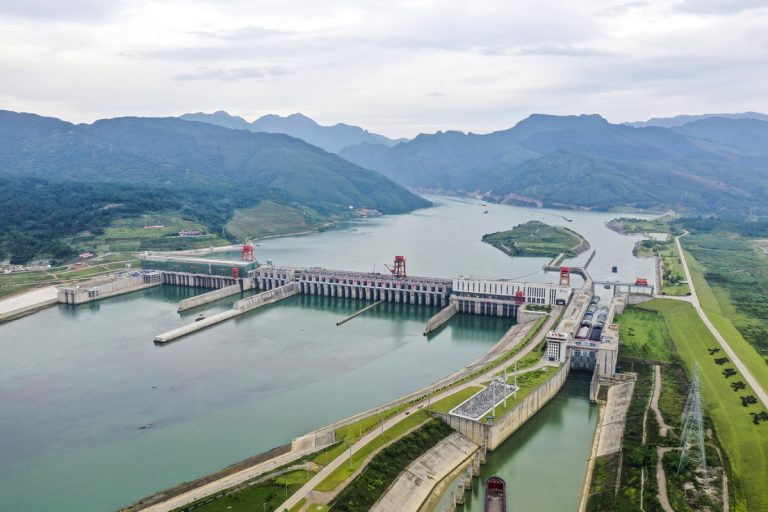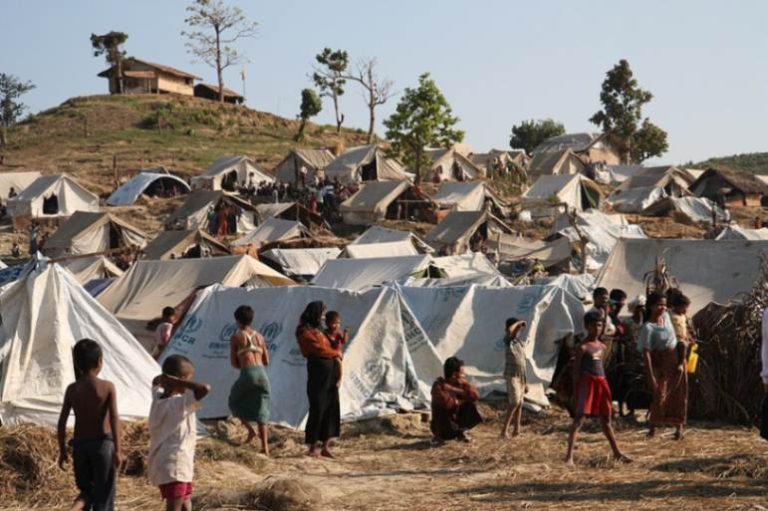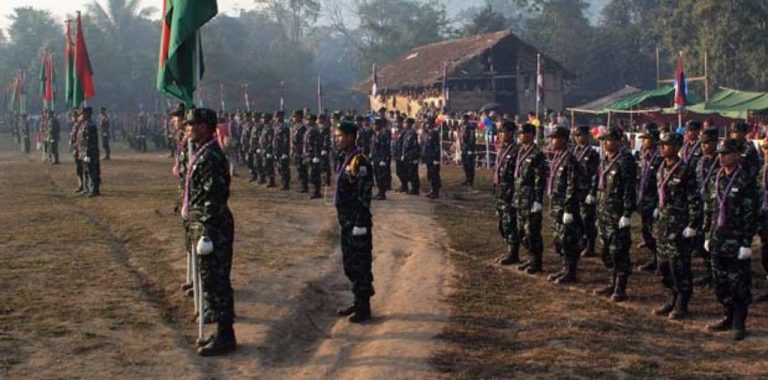
Rakhine, a state consisting of more than three million people is currently suffering from an armed struggle between Tatmadaw and various ethnic militias including the most prominent Arakan Army(AA). This ongoing conflict has led to numerous casualties. Reports have indicated that a large number of the population have lost their lives in the state due to ongoing violence. The conflict seems to be increasing in intensity as of September 2024.
Historical analysis &Causes behind the conflict
While the Tatmadaw and Arakan Army (AA) are the primary warring parties, the Rohingya armed groups (such as ARSA) have been largely sidelined. The Rohingya population itself is mostly a victim of violence rather than an active combatant force. The 2017 crisis which saw a genocide against the Rohingya was primarily a Tatmadaw-led ethnic cleansing campaign against Rohingya civilians, supported by extremist nationalist groups. The AA had limited involvement at that time.
But the current day situation is different as The Tatmadaw reportedly allied with The RSO(Rohingya Solidarity Organization) to fight against the AA. This notion shows us that there is no permanency in friendship or enmity in international relations.
To analyze why the conflict in Rakhine goes on, we have to look at the initial historical context. We also have to analyze the three groups that are fighting in the region. Firstly, we start by looking the perspective of the Rohingya followed by the Rakhine people. We will analyze both their struggles and then explain the Tatmadaw’s role in it.
Rohingya perspective
The Rohingya have historical roots in Rakhine dating back centuries, but their identity as a distinct ethnic group gained prominence during the colonial era. The mistrust and conflict between The Rohingya people and The Rakhine people stems from various historical grievances. The Rohingya are an ethnic Muslim minority group that speaks an Indo-Aryan language. The term “Rohingya” itself emerged in the 19th century. It had early references in British colonial documentation from 1799.
Historically, the Rohingya people have faced systemic state-orchestrated discrimination. The 1982 Citizenship Law effectively rendered them stateless by excluding them from the list of recognized ethnic groups although many have lived in the region for generations.
The situation escalated significantly in the late 20th century, with military crackdowns leading to mass displacements. The most severe violence occurred in 2017, when a military campaign prompted approximately 700,000 Rohingya to flee to Bangladesh, with international observers alleging acts of genocide against them. Today, the Rohingya continue to face severe restrictions and persecution within Myanmar and are largely recognized as refugees in neighboring countries.
Rakhine perspective
In contrast, The Rakhine people, also known as Arakanese, are an ethnic group who mostly live in Rakhine State. Their history spans thousands of years. Arakan was originally home to multiple sovereign monarchies, including The Dhanyawadi, Waithali, and Mrauk U. The Kingdom of Arakan was a major naval power until it was conquered by the Burmese Konbaung dynasty in 1784. This led to a period of Burmese domination until the British acquired the territory following the First Anglo-Burmese War in 1826.
Rakhine became part of British India during colonial rule. Eventually, it became a separate Crown Colony. The Rakhine people have traditionally worked in agriculture and fishing and their main religion was Theravada Buddhism, which influenced their cultural identity.
Since the independence of Burma in 1948, the Rakhine State has experienced communal tensions mainly between the Buddhist Rakhine and the Muslim Rohingya populations. These tensions have often escalated into violence, with significant conflicts noted in recent decades, particularly in 2012 and 2017, exacerbating the humanitarian crisis in the region. Today, the Rakhine people continue to face challenges from the majority Bamar-led Myanmar government, including economic hardships and political marginalization.
Tatmadaw&Burmese government perspective
Moving on to the third party, The Burmese Government and The Tatmadaw have a history of conflict with the ethnic groups residing in The Rakhine state. A significant portion of Rakhine people consider the Burmese invasion of 1784 to be unfair. The Arakan Army (AA) was formed in 2009 because they considered that the Central Government dominated by Bamars were exploiting their land at the expense of the Rakhine people. During the NLD’s term which spanned for 2016-2021, the AA grew powerful. The Tatmadaw also had conflict with the ARSA which was a Rohingya armed group. The conflict intensified in 2017 and it led to the genocide of 700000 Rohingyas to Bangladesh as refugees. Between 2018-2020, intense fighting started between the Tatmadaw and the AA.
Analysing current situation
Since the beginning of 2024, The AA has taken over major territories in their battle against the Myanmar Military Junta or the Tatmadaw. The Arakan Army is part of The Three Brotherhood Alliance which is fighting against the Tatmadaw to restore democracy in Myanmar and to achieve rights for the ethnic minorities. Although The Arakan army claims to protect and safeguard civilians, numerous reports have indicated that it has committed acts of violence against The minority Rohingya Muslim population.
According to reports, the AA after capturing Buthidaung, focused on an offensive in Maungdaw Township. Reports suggest that The RSO (Rohingya Solidarity Organization) allied itself with The Tatmadaw to resist the AA offensive. Reportedly, The RSO members call themselves “Maungdaw militia” to avoid international criticism. Moreover, an independent investigation by Fortify Rights group, An NGO, revealed that the RSO kidnapped Rohingya refugees from relief camps to use them as footsoldiers.
This has led to renewed fear of Rohingya expulsion as inter-ethnic tensions have sharply risen. Reportedly, a large number of the Rohingya population has tried and are trying to enter Bangladesh as the conflict rages on. First-hand on-ground reports suggest Bangladeshi forces and the government are reluctant to let more Rohingya refugees come to Bangladesh due to various reasons. Rohingya population who are still managing to get into Bangladesh are claiming that the Arakan Army is using drones to bomb them.
Potential Solutions to the Issue
Now questions can arise on how to ensure safety and security in Rakhine state so that Rohingya population can return and Bangladesh and the entire international community can rest easy knowing that the Rohingyas are safe. There are several ways this issue can be addressed. Many of them may be realistic and many of them would be hypothetical and far-fetched. Let’s take a look at them.
The Rohingya crisis, marked by the mass displacement of Rohingya people from Myanmar to Bangladesh, requires multifaceted solutions to address both immediate humanitarian needs and long-term political issues. Various strategies have been proposed by experts and organizations to resolve the crisis effectively.
There are multiple Strategies that could be implemented for the resolution of the Rohingya Refugee crisis.
Primarily Bangladesh along with other vocal value-based international actors must ensure Safe and voluntary repatriation of the refugee population. A significant portion of experts consider this strategy to be the most effective solution and which doesn’t require any military intervention. This solution requires addressing the primary reasons behind the crisis and furthermore, it requires an end to state sanctioned violence and discrimination. In the past, this required effective international pressure on Myanmar’s military but the contemporary military situation suggests that strong communication line with the Arakan Army must be created. Although its unlikely that the Arakan Army would allow the Rohingya to return as they are the one currently perpetrating a genocide there. The question still remains even if The Arakan army takes back the Rohingya, would the Rohingya receive fair treatment? Or will it be like what the Tatmadaw did in 2017. The recent violent actions of the Arakan Army seems the second reality is more likely.
Another solution through ensuring Rohingya empowerment and Self-Reliance in Bangladesh but there is a high chance that the Bangladeshi government would turn it down as Bangladesh seeks eventual repatriation of the refugees in Myanmar not settle them in Bangladesh. Bangladesh is already a country with a small land area yet with one of the largest population in the planet. Its population density creates significant complication which doesn’t allow it to habilitate refugee population like the Western developed states. Furthermore, arrival of Rohingya population has led to decrease in low wage jobs for the native Bengali populace in the border areas of Cox’s Bazar. This may increase inter-ethnic tensions.
The final and the most effective yet the most dangerous solution is a military intervention. Rakhine is currently on the verge of being entirely taken over by The Arakan Army which is a non-state actor performing acts of violence against the minority Rohingya population. A military intervention with the aim of peacekeeping can return at least a semblance of peace in that region. This military intervention for peacekeeping can be a Bangladesh led intervention with or without various Muslim and Western nations. India although unlikely may also intervene as they have stake in the region with Kaladan project. Of course, a military intervention is risky and may have heavy negetive consequences such as: increasing instability in the region, increase of foreign interference, civiliabn casualties etc.
Contemporary Role of the International Actors(US&UN)
Although the US claims they are troubled by the violence against the Rohingyas who are suffering due to being in a crossfire between Tatmadaw and AA, the US has not yet condemned the Arakan Army. The Arakan army enjoys links with the NUG(National Unity Government). NUG and the US enjoy cordial relations with each other characterized by enhanced support and mutual cooperation. The U.S. and UN have been selective in their condemnation but have acknowledged the worsening situation. However, stronger international pressure on both the Tatmadaw and AA is needed.
Bangladesh, the most important actor in the issue
Bangladesh, the country which is currently home to a large number of Rohingya population (1.3 million) seeks to end the crisis as soon as possible. Although, Bangladesh’s official foreign policy doesn’t seek any military conflict with any nations and Bangladesh seeks international assistance to solve the issue of Rohingya crisis, hypothetically in the long term, a military intervention is not out of the question.
The new interim Bangladeshi government is slowly running out of time. There could be elections in Bangladesh by the end of 2025. This will bring a democratically elected government in Bangladesh after a long period of authoritarian rule. Thus, that administration seemingly would be vastly different than the past government which often was reluctant to take serious action due to fear of international pressure. The future government is likely to be strictly vocal against any illegal misdeeds performed against Bangladesh by any actors.
Now, all of this three strategies can be implemented. But what could bring the best solution for the issue seems like a matter of debate. It seems that the Bangladeshi government can take the first and third options (peaceful repatriation or military intervention) into consideration but would support and go with the first option as it is very crucial for Bangladesh to see an end to this crisis through peaceful means such as mutual agreements and dialogues.
Near Future predictions
The Rakhine conflict seemingly may saw increasing international coverage in the coming day coupled with a Bangladesh broken from its past authoritarian shackles and creating a new foreign policy framework that emphasizes its own interest above all. The region is likely to become volatile. Myanmar is currently the most war torn country in The Indo Pacific. As the Indo Pacific tension between The US and China heats up, the world must keep a keen eye on the matter. The situation in Myanmar if not contained could lead to a domino of more conflicts throughout the region which will hamper the world’s stability.
[Photo by Seyyed Mahmoud Hosseini, via Wikimedia Commons]




